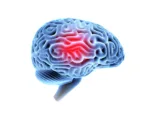
Traumatic experiences can leave an indelible mark on a person’s life, manifesting in various ways. Two conditions that often arise from such experiences are traumatic brain injury (TBI) and post-traumatic stress disorder (PTSD). In this blog, we’ll explore the key differences between TBI and PTSD, shedding light on what these conditions entail and the unique challenges they present.
What is Traumatic Brain Injury?
Traumatic brain injury, or TBI, occurs when an external force injures the brain. This force can result from a blow, jolt or penetrating object, causing disruption to normal brain function. TBIs can range from mild to severe, and symptoms may appear immediately or develop over time.
Symptoms of TBI
Depending on the severity of the injury, physical symptoms of TBI may include headaches, dizziness, nausea and fatigue. In severe cases, individuals may experience seizures or loss of consciousness. TBI can also impact cognitive functions such as memory, attention and problem-solving. Individuals may struggle with concentration and find it challenging to process information.
Mood swings, irritability and heightened emotional responses are common emotional symptoms of TBI. Behavioral changes may include impulsivity and difficulty regulating emotions.
What is Post-Traumatic Stress Disorder?
Post-traumatic stress disorder, or PTSD, is a mental health condition that can develop after experiencing a traumatic event. Unlike TBI, which involves physical injury to the brain, PTSD is rooted in psychological and emotional responses to trauma.
Symptoms of PTSD
Individuals with PTSD often experience distressing and intrusive memories of traumatic events. These memories can manifest as flashbacks or nightmares, causing significant emotional distress.
Those with PTSD may actively avoid reminders of the traumatic event, including places, people or activities associated with the trauma. This avoidance can interfere with daily life and social interactions.
People with PTSD may be easily startled, have difficulty sleeping and experience heightened levels of anxiety. This state of hyperarousal can lead to irritability, difficulty concentrating and a constant feeling of being on edge.
Distinguishing TBI from PTSD
While TBI and PTSD can share some symptoms, they are distinct conditions with different underlying causes. TBI is primarily a physical injury to the brain, whereas PTSD is a mental health condition resulting from psychological trauma.
- Origin of Symptoms: TBI symptoms arise from structural damage to the brain, affecting its normal functioning. In contrast, PTSD symptoms stem from the emotional and psychological impact of a traumatic event.
- Diagnosis and Treatment: TBI is typically diagnosed through imaging tests such as CT scans or MRIs, while PTSD is diagnosed based on observed symptoms and a comprehensive psychiatric evaluation. Treatment approaches also differ, with TBI often requiring medical interventions and rehabilitation, while PTSD may involve therapy and counseling.
Get help today
For accurate diagnosis and effective treatment, understanding the distinctions between TBI and PTSD is important. Though the conditions share some symptoms, they are fundamentally different in their origins and manifestations. Recognizing these differences empowers individuals, healthcare professionals and society at large to provide appropriate support and care to those grappling with the aftermath of trauma.
As we continue to delve into the complexities of the human mind and body, fostering awareness and empathy becomes paramount in promoting healing and resilience. Get the help you need and deserve today, reach out to our team at High Focus Centers.
Recent Posts
- How Mood Stabilizers Work to Restore Emotional Balance
- Trauma-Informed Approaches in Therapy: Why Understanding Trauma is Essential for Healing
- Using Art as a Voice: Exploring the Therapeutic Benefits of Creativity
- What is Xylazine?
- How Overcoming Roadblocks is Crucial to Recovery – And How Your Treatment Center Can Help




